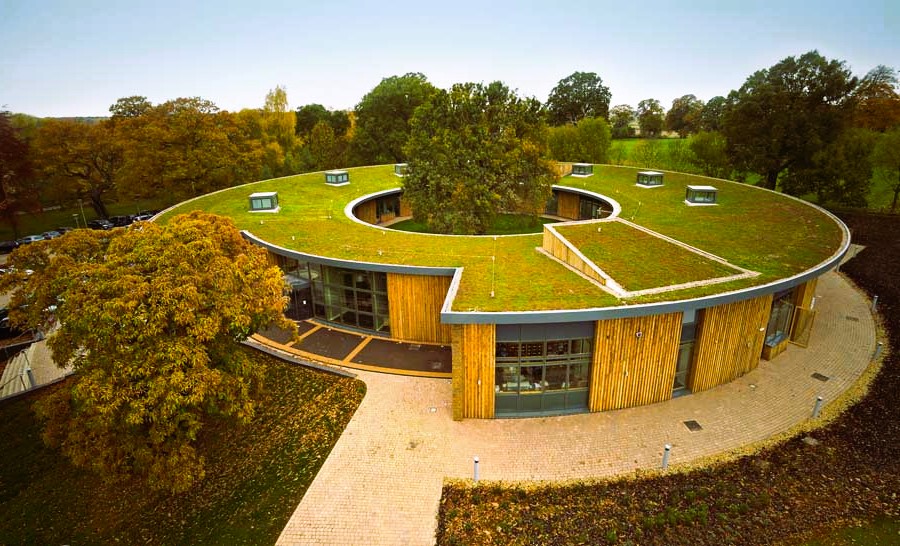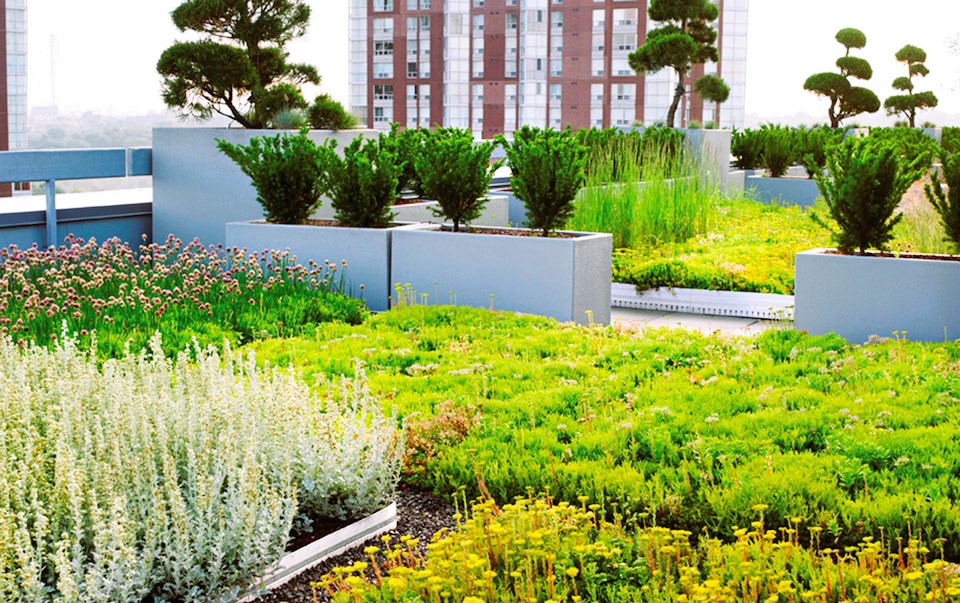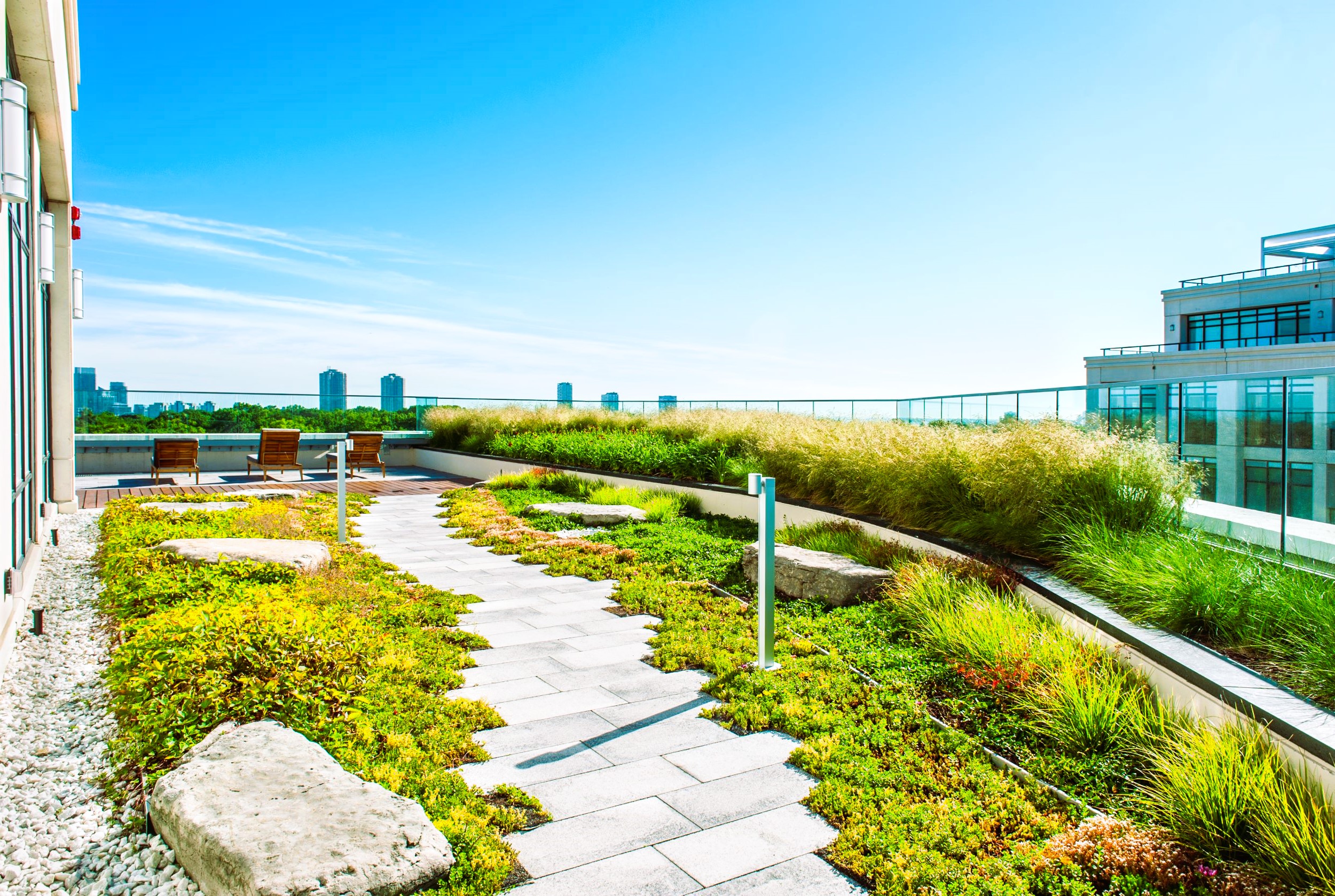Green roofs have become a significant trend in sustainable building practices, offering numerous environmental, economic, and social benefits. In Ontario, Canada’s most populous province, green roofs are transforming the landscape, turning buildings into living, breathing spaces that contribute to a healthier and more sustainable future. In this article, we will explore the advantages of green roofs, their impact on Ontario’s buildings, and the standards and guidelines that govern their implementation.
- Environmental Benefits
- a. Stormwater Management: Green roofs absorb and retain rainwater, reducing the burden on stormwater systems. They act as natural sponges, preventing excessive runoff and filtering pollutants, thereby improving water quality and reducing the risk of urban flooding.
- b. Urban Heat Island Mitigation: Green roofs help counteract the urban heat island effect by providing a cooling effect. The vegetation and substrate on the roof absorb solar radiation and release it through evapotranspiration, reducing ambient temperatures and improving the microclimate of urban areas.
- c. Air Quality Improvement: Plants on green roofs filter air pollutants and absorb carbon dioxide, improving air quality and reducing greenhouse gas emissions. They act as natural air purifiers, contributing to a healthier and more sustainable urban environment.
- d. Biodiversity Enhancement: Green roofs create valuable habitats for birds, insects, and other wildlife in urban areas. By incorporating native plant species, green roofs support biodiversity and contribute to the overall ecological health of Ontario.

- Economic Benefits
- a. Energy Efficiency: Green roofs provide natural insulation, reducing the need for artificial heating and cooling in buildings. This leads to energy savings and lower utility costs for building owners and occupants.
- b. Extended Roof Lifespan: The vegetation layer of green roofs acts as a protective barrier, shielding the waterproofing membrane from ultraviolet (UV) radiation, temperature fluctuations, and physical damage. This prolongs the lifespan of the roof, reducing maintenance and replacement costs.
- c. Increased Property Value: Green roofs enhance the aesthetics and marketability of buildings, making them more desirable to potential buyers or tenants. Properties with green roofs often command higher rental or sale prices, offering a return on investment for building owners. Increasing the attractiveness of the curb, tips for beautiful homes.
- Standards and Guidelines for Green Roofs
In Ontario, green roof implementation is guided by standards and guidelines provided by various organizations and government entities:
- a. Green Roof Bylaw: Some municipalities, such as Toronto, have implemented green roof bylaws that require a certain percentage of new developments to incorporate green roofs. These bylaws promote sustainable building practices and contribute to the greening of urban areas.
- b. Toronto Green Standard: The City of Toronto has developed the Toronto Green Standard, which provides guidelines and performance targets for sustainable building practices, including green roofs. These standards ensure that green roofs are designed and installed in a manner that maximizes their benefits.
- c. Ontario Ministry of Municipal Affairs and Housing: The ministry provides resources and guidance on sustainable building practices, including green roofs. Their website (www.ontario.ca/page/green-roof-implementation) offers information on incentives, technical requirements, and best practices.
- Community Engagement and Education

Community engagement and education are crucial for the successful implementation of green roofs. By raising awareness about the benefits of green roofs and providing resources for individuals and organizations interested in incorporating them into their buildings, Ontario can foster a culture of sustainability and inspire widespread adoption.
Conclusion
Green roofs are transforming Ontario’s buildings into living landscapes, offering environmental, economic, and social benefits. By implementing green roofs, Ontario can mitigate the impacts of urbanization, improve air and water quality, enhance energy efficiency, and support biodiversity.
Through collective efforts and a commitment to sustainable building practices, Ontario can create a greener and more resilient built environment, contributing to a healthier and more sustainable future for all.


